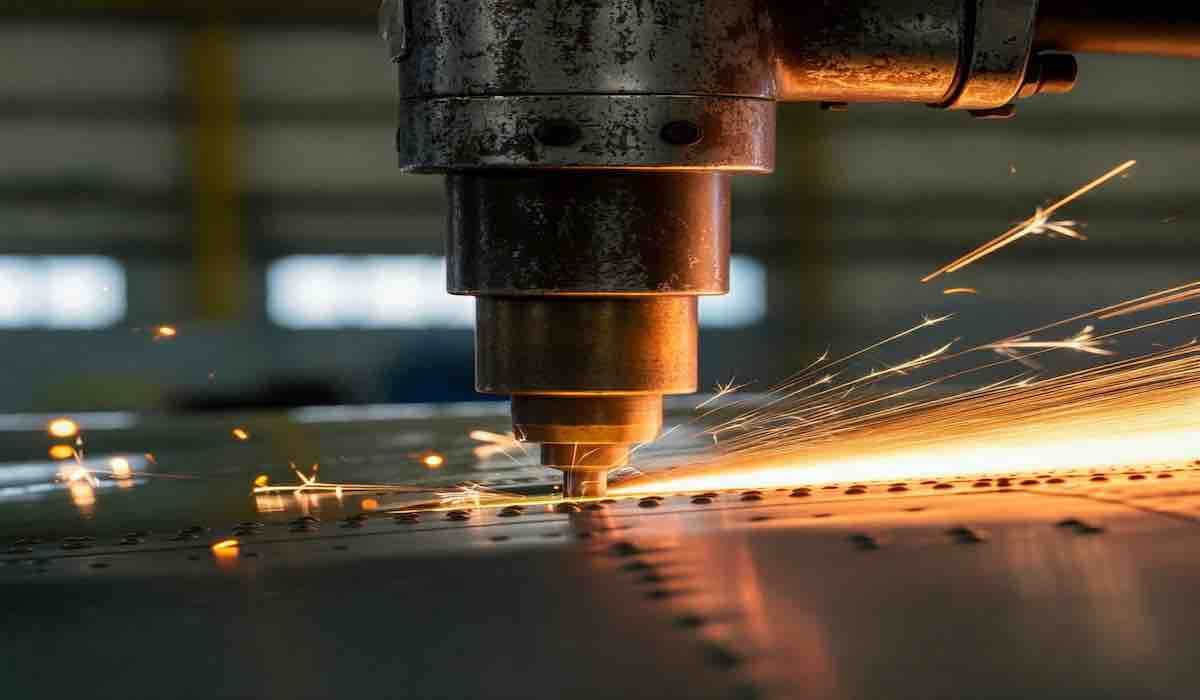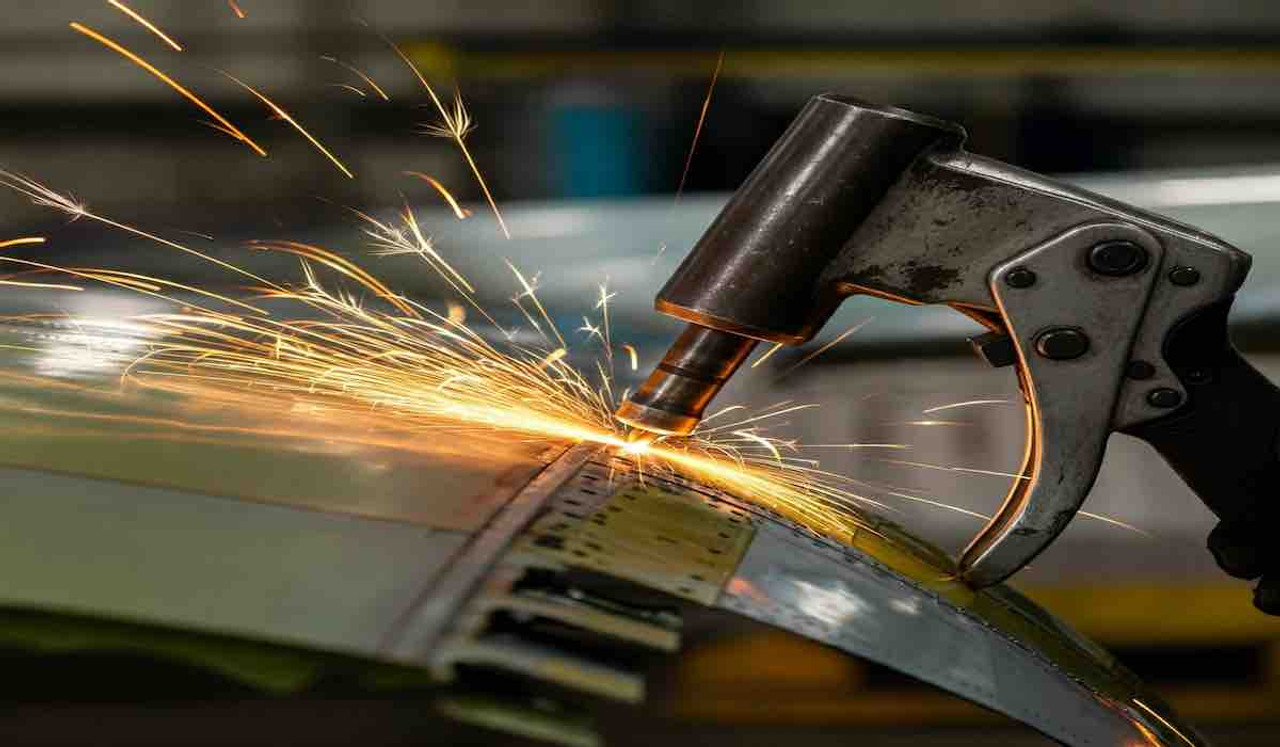Air Hammer Rivet Guns: Essential Tools for Aircraft Assembly
A Deep Dive into the Essential Tool that Holds the Aerospace Industry Together
In aircraft assembly, where precision and efficiency reign supreme, the air hammer rivet gun stands as an indispensable tool. With millions of rivets used in the construction of a single aircraft, the rivet gun plays a critical role in ensuring structural integrity and aerodynamic performance. This article delves into the significance of this seemingly simple tool, exploring its mechanics, applications, and the crucial role it plays in the aerospace industry. This makes this article Air Hammer Rivet Guns: Essential Tools for Aircraft Assembly a great read
The Unsung Hero of Aircraft Construction
A modern aircraft, such as the Boeing 787, is a marvel of engineering, comprising millions of individual components seamlessly joined together. A significant proportion of these components are held together by rivets, with an estimated 2.4 million fasteners used in a single 787, of which 78% are rivets. Each of these rivets is meticulously driven into place using an air hammer rivet gun.
While often overlooked, the rivet gun is essential to the efficiency of aircraft assembly, a process that significantly impacts the overall viability of the aerospace industry. The speed and precision with which components are joined directly influence productivity, making the rivet gun a critical factor in the timely and cost-effective production of aircraft.
Distinguishing the Air Hammer Rivet Gun from the Air Hammer
At first glance, the air hammer rivet gun and the air hammer may appear similar, sharing a resemblance in both appearance and operation. However, a closer look reveals a subtle yet crucial difference in their mechanisms, dictating their distinct applications.
The Air Hammer: A Tool for Brute Force
The air hammer, also known as a power hammer or pneumatic hammer, is designed for tasks requiring sheer power. Its primary function is to carve, chip, or break hard materials like stone and metal. It can also be used for digging holes or cutting through solid surfaces, effectively acting as a highly efficient chisel or hammer.
The air hammer operates by utilizing compressed air, which is supplied from a compressor through a hose. This compressed air drives a piston within the hammer's cylinder, generating powerful blows. While capable of delivering immense force, the air hammer lacks the precision required for delicate tasks like aircraft assem bly.
bly.
The Air Hammer Rivet Gun: Precision and Control
Unlike the air hammer, the rivet gun is designed for finesse and control. Driving rivets requires a delicate touch, ensuring the rivet is "squeezed" with just the right amount of force to secure the joint without causing damage. This precision is crucial in aircraft assembly, where various rivet types and materials demand adaptability from the tool.
The rivet gun operates on a similar principle to the air hammer, utilizing compressed air to drive a piston that strikes the rivet. However, the rivet gun incorporates a crucial component that sets it apart: a regulator. This regulator allows the operator to adjust the power delivered by the tool, ensuring optimal force for each rivet and material.
The Bucking Bar: Completing the Riveting System
The air hammer rivet gun works in tandem with another essential tool: the bucking bar. While the rivet gun drives the rivet head, the bucking bar provides resistance at the tail end, deforming the rivet and creating a secure joint. The bucking bar also serves to absorb some of the force from the rivet gun, reducing vibration and ensuring a smoother operation.
Essential Riveting Tools for Aircraft Assembly
An efficient riveting system is paramount in aircraft assembly, and several tools contribute to this process:
- RRH Series Riveting Hammers: These hammers feature ergonomic designs and vibration-dampening systems, enhancing operator comfort and reducing fatigue during prolonged use. Different models within the RRH series cater to various rivet sizes and applications, offering adjustable power options for optimal control.
- RN Series Riveting Hammers: Designed for applications where accessibility is critical, these compact and powerful hammers excel in confined spaces. Their ease of operation and control make them ideal for intricate riveting tasks.
- RBB Series Bucking Bars: These bars complement the rivet guns by providing essential resistance and vibration dampening. Their quick-change retainers allow for various dolly configurations, adapting to diverse workspace requirements.
Optimizing Aircraft Assembly with Advanced Riveting Tools
Manual riveting remains a labor-intensive process, accounting for a significant portion of the total labor cost in aircraft manufacturing. To address this, advanced riveting tools have been developed to enhance productivity, reduce operator fatigue, and minimize costs.
Companies like Atlas Copco offer a comprehensive range of riveting tools designed to optimize aircraft assembly. These tools prioritize operator safety and comfort while maximizing efficiency and reducing vibration-related injuries. By investing in such advanced tools, the aerospace industry can streamline its production processes and enhance overall productivity.
The Future of Riveting in Aircraft Assembly
As technology continues to advance, the future of riveting in aircraft assembly is likely to involve increased automation and the integration of robotics. Automated riveting systems can further enhance precision, speed, and consistency, reducing reliance on manual labor and minimizing the risk of human error.
However, the air hammer rivet gun, with its adaptability and control, is likely to remain a crucial tool in the aerospace industry. Its ability to cater to various rivet types and materials makes it indispensable for intricate assembly tasks that may not be suitable for automation.
Conclusion
The air hammer rivet gun, though seemingly simple, plays a vital role in the complex world of aircraft assembly. Its precision, control, and adaptability make it an essential tool for ensuring the structural integrity and aerodynamic performance of aircraft. As the aerospace industry continues to evolve, the rivet gun, alongside advancements in automation and robotics, will continue to contribute to the efficient and safe production of aircraft, connecting the world and driving technological progress.









